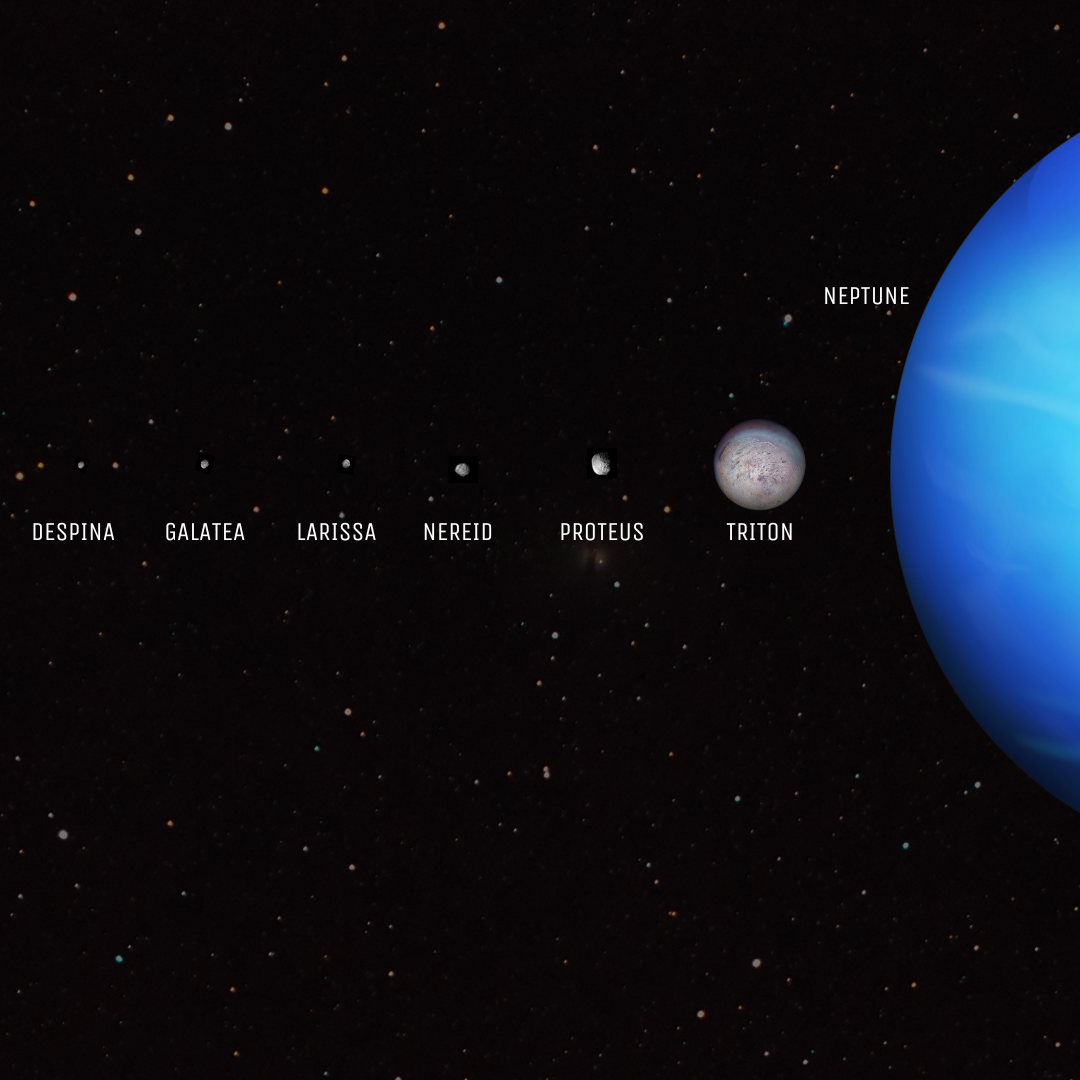
Solar System: Neptunian System
Neptune, the eighth and farthest known planet from the Sun, is orbited by a complex system of 14 known moons, which range from small, irregularly-shaped bodies to the massive, spherical Triton. The Neptunian system provides invaluable insights into the formation and evolution of celestial bodies in the outer Solar System. This article aims to provide a detailed overview of Neptune's most significant moons, emphasising their unique attributes and importance in the context of planetary science.
- Triton: The Geologically Active Moon
Triton, with a diameter of 2,710 km, is the largest moon of Neptune and the seventh-largest moon in the Solar System. Its surface is composed primarily of water ice, with traces of nitrogen and methane. Triton's most striking feature is its geologically active surface, characterized by cryovolcanism and geysers that spout nitrogen gas and dust particles into space. This activity is believed to be caused by tidal heating generated by its interaction with Neptune. Notably, Triton has a retrograde orbit, indicating that it was likely captured by Neptune's gravity and was once a dwarf planet from the Kuiper Belt.
- Proteus: The Irregularly-shaped Moon
Proteus, the second-largest Neptunian moon, has an irregular shape with a diameter of approximately 420 km. Its surface is composed of water ice and is heavily cratered, suggesting an ancient and geologically stable history. The largest crater on Proteus, Pharos, spans over 230 km in diameter. The moon's irregular shape is attributed to its lack of sufficient gravitational force to mold itself into a more spherical form.
- Nereid: The Highly Eccentric Moon
Nereid, with a diameter of approximately 340 km, is the third-largest moon of Neptune. Its most distinctive feature is its highly eccentric orbit, which takes it as close as 1.4 million km and as far away as 9.6 million km from Neptune. This extreme elliptical orbit suggests that Nereid may have been a captured object, similar to Triton. Nereid's surface is believed to be composed of water ice, and its irregular shape and highly cratered surface indicate a geologically stable history.
- Larissa, Galatea, and Despina: The Inner Neptunian Moons
Larissa, Galatea, and Despina are three small, inner Neptunian moons with diameters ranging from 150 to 200 km. These moons are composed primarily of water ice and are irregularly shaped, indicating their relatively weak gravitational forces. They orbit close to Neptune, within its system of faint rings. The moons exhibit a combination of smooth and cratered surfaces, suggesting a mix of geological activity and stability in their past.
